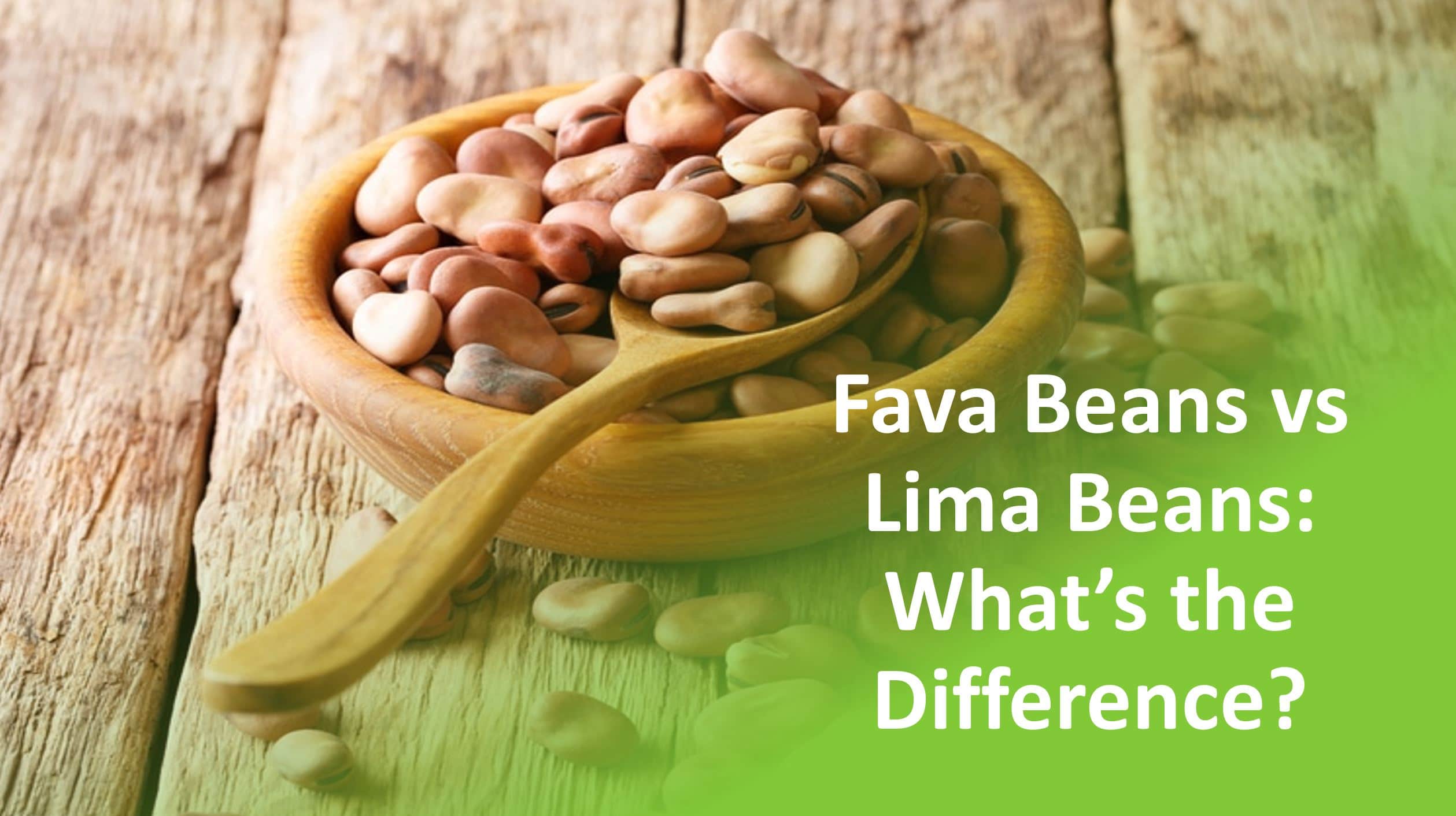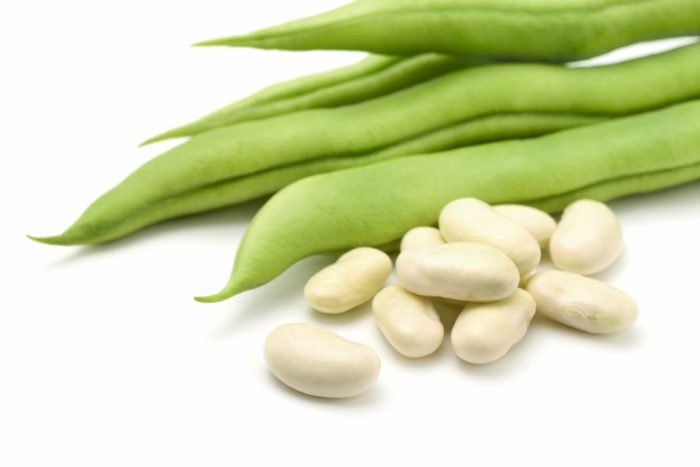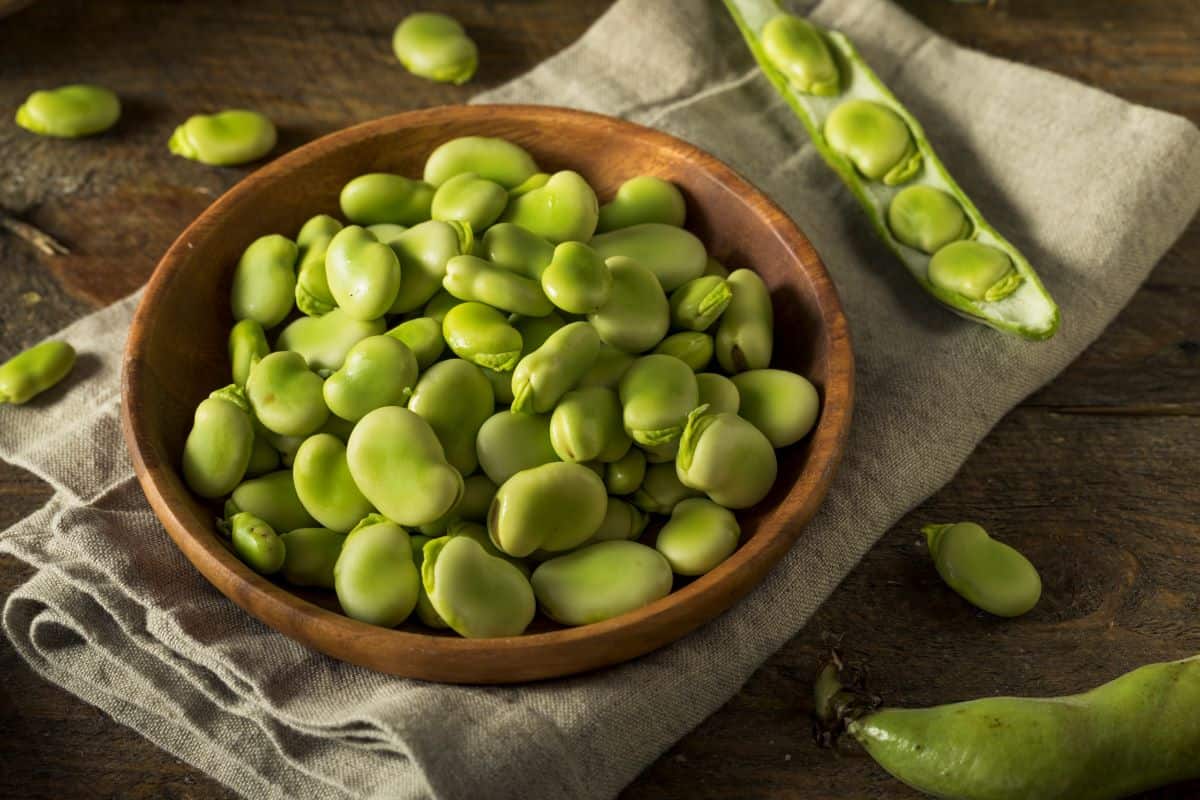Introduction

Lima beans and fava beans are two popular legumes that are often compared due to their similarities in appearance. However, these beans have distinct characteristics that set them apart. This article aims to provide an overview of lima beans and fava beans, highlighting their differences in terms of size, texture, nutrition, cooking uses, and physical appearance. By understanding these variations, individuals can make informed choices about which bean to incorporate into their recipes and reap the unique benefits each legume has to offer. So, let’s delve into the world of lima beans and fava beans and discover their contrasting qualities.
Overview Of Lima Beans And Fava Beans
Lima beans and fava beans are both popular legumes with distinct characteristics. Lima beans, also known as butter beans, are small and oval-shaped with a creamy texture. They have a mild flavor with nutty and sweet undertones, making them versatile in various dishes. Fava beans, on the other hand, are larger and have a flat, oval shape. They have a grassy and nutty flavor, similar to chickpeas, and a slightly sweet taste. Fava beans are commonly used in salads and as a side dish. Understanding these differences helps individuals choose the right bean for their culinary needs.
Key Differences Between Lima Beans And Fava Beans
Lima beans and fava beans may seem similar, but they have distinct differences. Firstly, size and shape play a role, with lima beans being smaller and oval-shaped, while fava beans are larger and flat. Taste is another differentiating factor, as lima beans have a mild flavor with nutty and sweet undertones, while fava beans have a grassy and nutty taste with a hint of sweetness. Additionally, culinary uses vary, with lima beans being versatile in various dishes, and fava beans commonly used in salads and as a side dish.
Nutritional Value

Both Lima beans and Fava beans offer significant nutritional value. Lima beans are high in protein, fiber, and vitamins A and C. They are also a good source of potassium and magnesium. On the other hand, Fava beans are even richer in protein, potassium, and magnesium compared to Lima beans. They also contain more folate and vitamin B6. Both beans provide essential vitamins and minerals necessary for a well-balanced diet. However, the specific nutrient compositions differ, making each bean a unique addition to any meal plan.
Nutritional Profile Of Lima Beans
Lima beans are a nutritious legume, packed with essential vitamins and minerals. They are a great source of protein and fiber, making them a filling and satisfying addition to any meal. Lima beans are rich in vitamins A and C, which are important for maintaining healthy immune function and promoting skin health. They also contain potassium and magnesium, which are essential minerals for the proper functioning of the heart and muscles. Additionally, Lima beans provide a good amount of folate, an important nutrient for pregnant women and for the production of red blood cells.
Nutritional Profile Of Fava Beans
Fava beans are highly nutritious legumes, known for their rich protein and fiber content. They are also a great source of essential vitamins and minerals. Fava beans are particularly high in potassium, magnesium, and folate. They contain vitamin K, which plays a vital role in blood clotting. Fava beans are also a good source of vitamin B6, providing benefits for brain and nervous system function. Moreover, they are low in fat and cholesterol, making them a healthy choice for maintaining heart health. Incorporating fava beans into your diet can provide a wide range of nutritional benefits.
Culinary Uses

Fava beans and lima beans have distinct culinary uses. Fava beans are commonly used in Italian and North African dishes. They can be boiled, fried, or even made into a puree. Fava beans have a lightly grassy and nutty flavor, making them perfect for use in salads or as a side dish. On the other hand, lima beans are popular in South American and Caribbean cuisine. They have an earthier flavor, which makes them an ideal addition to soups and stews. Both legumes offer unique flavors and textures that can enhance a variety of dishes.
Uses Of Lima Beans In Cooking
Lima beans are versatile legumes that can be used in various culinary preparations. They are commonly used in South American and Caribbean dishes. Lima beans can be cooked and added to soups, stews, or chili for a hearty and nutritious meal. They can also be mashed and used as a filling for tacos or enchiladas. Lima beans can also be roasted and seasoned as a crunchy and flavorful snack. Moreover, they can be added to salads, pasta dishes, or mixed vegetable medleys for added texture and protein. The possibilities of using lima beans in cooking are endless!
Uses Of Fava Beans In Various Cuisines
Fava beans have been used in various cuisines around the world for their unique flavor and texture. In Italian cuisine, fava beans are a key ingredient in dishes like pasta e fagioli and fava bean puree. In North African cuisine, fava beans are commonly used in traditional dishes such as ful medames and falafel. In Middle Eastern cuisine, fava beans are used in dishes like foul moudammas and are often served with flatbread. Fava beans are also popular in Greek cuisine, where they are used in dishes like favas me saltsa and fava bean soup. The versatility of fava beans makes them a delicious and nutritious addition to various culinary traditions.
Health Benefits

Consuming both Lima Beans and Fava Beans offers a range of health benefits. Lima Beans are rich in dietary fiber, which aids in digestion and helps control blood sugar levels. They are also a good source of potassium, which promotes heart health, and vitamin C, which boosts the immune system. On the other hand, Fava Beans are packed with protein, which helps in building and repairing tissues. They are also high in folate, which supports cell growth and development. Both beans contain important nutrients that contribute to a balanced diet and overall well-being.
Health Benefits Of Consuming Lima Beans
Lima Beans offer a range of health benefits. They are high in dietary fiber, which aids in digestion and helps control blood sugar levels. The fiber content also promotes a feeling of fullness, making it beneficial for weight management. Lima Beans are a good source of potassium, which is essential for heart health and maintaining healthy blood pressure levels. They also contain vitamin C, an antioxidant that boosts the immune system and helps protect against diseases. Including Lima Beans in your diet can contribute to a balanced and nutritious meal.
Health Benefits Of Consuming Fava Beans
Fava Beans offer a variety of health benefits. They are rich in dietary fiber, which aids in digestion and supports healthy bowel movements. The high fiber content also helps to control cholesterol levels and reduce the risk of heart disease. Fava Beans are a good source of protein, making them an excellent choice for vegetarians and vegans. They are also packed with vitamins and minerals, including iron, magnesium, and folate, which are essential for blood and cell health. Adding Fava Beans to your diet can contribute to overall well-being and provide numerous nutritional advantages.
Cooking Methods

When it comes to cooking Lima Beans and Fava Beans, there are various methods you can choose from. Both beans can be boiled, steamed, grilled, sautéed, pureed, roasted, or fried. However, it’s important to note that Fava Beans are typically only lightly cooked to preserve their texture. Lima Beans, on the other hand, can be enjoyed boiled or steamed as a side dish or pureed for spreads and dips. These cooking methods allow you to explore the different flavors and textures of these legumes and incorporate them into a wide range of recipes.
Different Ways To Prepare Lima Beans
There are several ways to prepare Lima Beans to bring out their delicious flavors and textures. One popular method is to boil them until they are tender and then season them with salt, pepper, and a sprinkle of herbs like thyme or rosemary. Lima Beans can also be sautéed with garlic and onions for a savory side dish. For a creamy and comforting option, puree the cooked Lima Beans with olive oil, lemon juice, and your choice of herbs and spices for a flavorful dip or spread. Lima Beans are versatile and can be incorporated into a variety of dishes for a nutritious and tasty meal.
Different Ways To Cook Fava Beans
Fava beans can be prepared in a variety of ways to bring out their unique flavor and texture. One popular method is to boil the beans until they are tender and then sauté them with olive oil, garlic, and a touch of lemon juice for a delicious side dish. Fava beans can also be roasted in the oven with olive oil, salt, and pepper for a crispy and flavorful snack. Another option is to puree the cooked fava beans with tahini, lemon juice, and garlic to make a tasty and nutrient-rich dip. Lastly, fava beans can be incorporated into stews, soups, and salads for added protein and fiber. With their versatility, fava beans can be enjoyed in many different ways to suit your taste preferences.
Conclusion

In conclusion, while both Lima beans and Fava beans are nutritious legumes with their own unique characteristics, they differ in terms of taste, texture, and nutritional content. Lima beans have a creamier texture and are higher in vitamins A and C, while Fava beans have a smoother texture, are packed with protein, and contain more potassium and magnesium. Both beans offer numerous health benefits and can be enjoyed in various culinary preparations. Whether you choose Lima beans or Fava beans, they are both versatile and nutrient-dense additions to your diet.
Summarizing The Differences And Uses Of Lima Beans And Fava Beans
Lima beans and fava beans may appear similar at first glance, but they have distinct differences in taste, texture, and nutritional content. Lima beans have a mild flavor with nutty and sweet undertones, while fava beans have a rich, earthy taste. Lima beans are known for their creamier texture, while fava beans have a smoother consistency. In terms of uses, Lima beans are commonly used in soups, stews, and salads, while fava beans are popular in Mediterranean and Middle Eastern cuisines, often used in dishes like falafel and ful medames. Both beans offer numerous health benefits and are versatile in the kitchen.
Recommendations And Final Thoughts
Based on the diverse uses and health benefits of both Lima beans and Fava beans, it is recommended to incorporate these legumes into your regular diet. Lima beans can bring a creamy texture and mild flavor to soups, stews, and salads, while Fava beans can add an earthy richness to Mediterranean and Middle Eastern dishes. Both beans are packed with essential nutrients, making them excellent choices for a balanced and nutritious diet. So go ahead and explore the culinary possibilities these legumes offer, and enjoy their unique flavors and textures.
FAQ About Lima Beans Vs Fava Beans: Contrasting Legumes
Q: What are the key differences between Lima beans and Fava beans?
A: Lima beans are small, flat, and green with a buttery texture, while Fava beans are larger, oval-shaped, and have a nutty flavor.
Q: How do the nutritional profiles of Lima beans and Fava beans differ?
A: Lima beans are higher in protein and fiber content compared to Fava beans. Fava beans, on the other hand, are rich in vitamins like folate and minerals like manganese.
Q: How do you prepare Lima beans and Fava beans for consumption?
A: Lima beans are typically boiled, steamed, or stir-fried, while Fava beans are commonly shelled, blanched, or roasted before eating.
Q: Are there any specific health benefits associated with consuming Lima beans or Fava beans?
A: Yes, Lima beans are beneficial for heart health due to their high fiber content, whereas Fava beans are known to aid in digestion and promote overall gut health.
Q: Are there any potential drawbacks or allergens related to Lima beans or Fava beans?
A: Lima beans contain oxalates that may interfere with mineral absorption, while Fava beans can cause G6PD deficiency reactions in some individuals.
Q: Can Lima beans and Fava beans be used interchangeably in recipes?
A: While both beans have distinct flavors and textures, they can be substituted for each other in certain dishes, though the taste and consistency may vary slightly.

Panda Cafe offers delicious dining and takeout to Fairfax, VA.
Panda Cafe is a cornerstone in the Fairfax community and has been recognized for its outstanding Chinese cuisine, excellent service, and friendly staff.